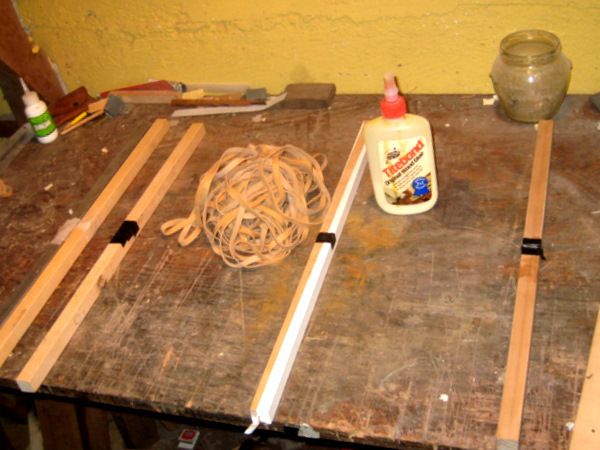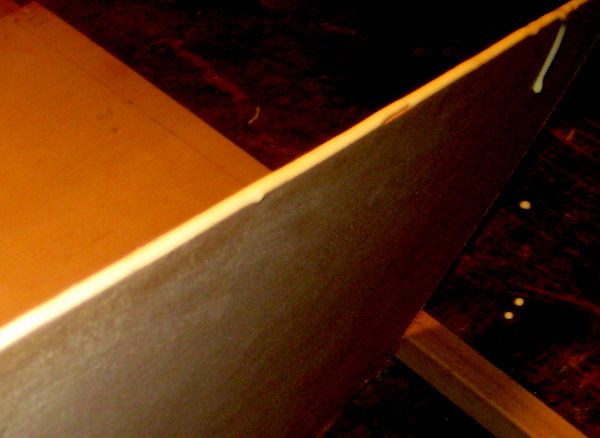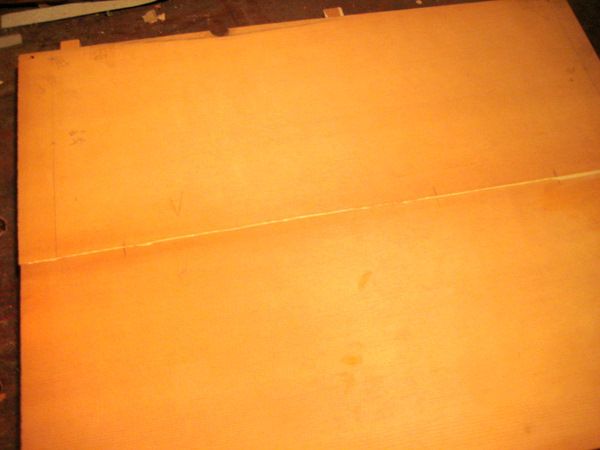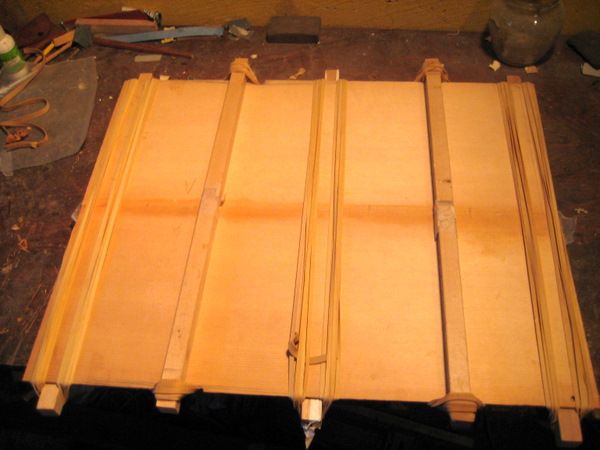Posted: Oct 09, 2015 1:23 pm
Gluing the plates together
The plates should be glued together right after they are jointed because a fresh planed edge gives the best glue joint.
I use Titebond for this joint instead of hide glue mostly because that's the way I originally learned how to do it and I've never wanted to experiment on this joint because if it fails on you your pretty much sol. Also, the really nice features of hot hide glue, it cleans up nicely and you can reactivate it if you need to re-glue something are not important here. I imagine hot hide glue would work just fine though. If I were using hot hide glue here I would use a heat lamp to warm the boards before glue to get the best possible joint.
Here's what I use for the job.

Besides the Titebond, 5 hardwood sticks and about 50 large rubbers.
The sticks have tiny slots cut in the center to help prevent the sticks from being glued to the soundboard. I also put some plastic tape or wax paper at that point just to make sure.
I put three sticks down on the bench with two spaced near the ends of the soundboards and one in the middle. Like so:

I put a healthy bead of glue on one board, maybe not quite this healthy, and use this board as an applicator to put glue on the other board.

All this happens pretty fast but I lay both boards down on the three sticks, making sure the seem is at the center of the boards. I press the boards together and flat on the sticks. Rub them horizontally against each other a few times to help spread the glue. Make sure the seam is fairly flat against the sticks again, make sure my marks line up and an the correct sides of the boards are being glued.


Do a quick wipe with a damp paper towel to get the bulk of the squeeze out.
And start putting on rubber bands. I put about 3 on at a time on each stick until I get six bands on each stick. Then I slip the remaining two sticks under the boards in between the other three. Turn the soundboards with the attached 3 sticks around and center them on the two remaining sticks. This is a good time for a quick wipe of glue on this side.
I add rubber bands to these sticks now. Until I get about 10 on each stick.
Turn the whole thing around one more time and finish adding rubber bands to the original three sticks until I have about 10 on each of them.
You should be fairly quick about all of this, and end up with something like:


The advantages of this over using pipe clamps or some such thing is that it prevents you from putting too much pressure on the soft soundboard while putting enough pressure to get the job done. The wood doesn't tend to buckle up a at the center. The sticks keep everything aligned. It adapts to all size boards and they can be irregularly shaped, which is sometimes the case for exotic hardwoods. There's not much of a jig to make and it's easy to store. Seven sticks might be a slight improvement over 5.
This rubber technique is an adaption of an older technique that used string and a wedge tensioner instead of rubber bands.
The plates should be glued together right after they are jointed because a fresh planed edge gives the best glue joint.
I use Titebond for this joint instead of hide glue mostly because that's the way I originally learned how to do it and I've never wanted to experiment on this joint because if it fails on you your pretty much sol. Also, the really nice features of hot hide glue, it cleans up nicely and you can reactivate it if you need to re-glue something are not important here. I imagine hot hide glue would work just fine though. If I were using hot hide glue here I would use a heat lamp to warm the boards before glue to get the best possible joint.
Here's what I use for the job.

Besides the Titebond, 5 hardwood sticks and about 50 large rubbers.
The sticks have tiny slots cut in the center to help prevent the sticks from being glued to the soundboard. I also put some plastic tape or wax paper at that point just to make sure.
I put three sticks down on the bench with two spaced near the ends of the soundboards and one in the middle. Like so:

I put a healthy bead of glue on one board, maybe not quite this healthy, and use this board as an applicator to put glue on the other board.

All this happens pretty fast but I lay both boards down on the three sticks, making sure the seem is at the center of the boards. I press the boards together and flat on the sticks. Rub them horizontally against each other a few times to help spread the glue. Make sure the seam is fairly flat against the sticks again, make sure my marks line up and an the correct sides of the boards are being glued.


Do a quick wipe with a damp paper towel to get the bulk of the squeeze out.
And start putting on rubber bands. I put about 3 on at a time on each stick until I get six bands on each stick. Then I slip the remaining two sticks under the boards in between the other three. Turn the soundboards with the attached 3 sticks around and center them on the two remaining sticks. This is a good time for a quick wipe of glue on this side.
I add rubber bands to these sticks now. Until I get about 10 on each stick.
Turn the whole thing around one more time and finish adding rubber bands to the original three sticks until I have about 10 on each of them.
You should be fairly quick about all of this, and end up with something like:


The advantages of this over using pipe clamps or some such thing is that it prevents you from putting too much pressure on the soft soundboard while putting enough pressure to get the job done. The wood doesn't tend to buckle up a at the center. The sticks keep everything aligned. It adapts to all size boards and they can be irregularly shaped, which is sometimes the case for exotic hardwoods. There's not much of a jig to make and it's easy to store. Seven sticks might be a slight improvement over 5.
This rubber technique is an adaption of an older technique that used string and a wedge tensioner instead of rubber bands.